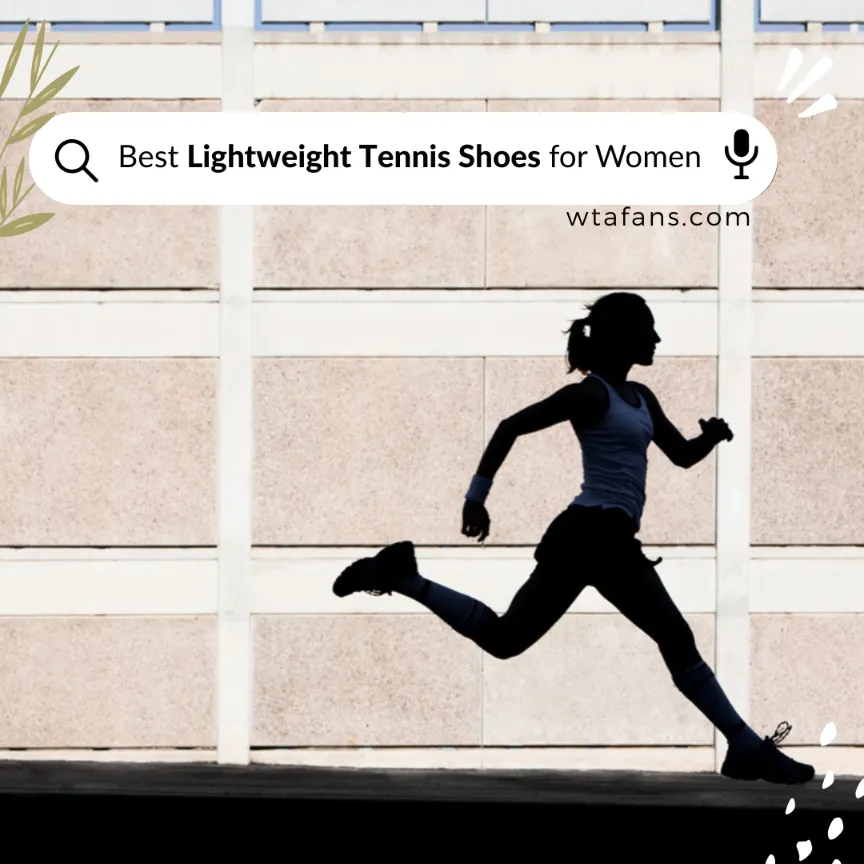Why Do Tennis Players Hate Pickleball? Exploring the Court Clash

Did you know that pickleball is one of the fastest-growing sports in America, yet it has sparked a surprising rivalry with tennis? This article delves into the growing tension between tennis players and pickleball enthusiasts, exploring the underlying reasons for this court clash.
Understanding this phenomenon is crucial for sports fans and anyone interested in the dynamics of competitive sports culture. By the end of this read, you’ll gain insights into the historical context, cultural differences, and the future of both games.
Have you ever wondered why some tennis players can’t hide their disdain for pickleball? As pickleball surges in popularity, it raises an intriguing question about the relationship between these two racquet sports.
This article aims to uncover the reasons behind the animosity, highlighting the cultural shifts and competitive fears fueling this rivalry. You’ll walk away with a clearer understanding of how sports can create divisions and communities and what that means for players and fans alike.
It might surprise you that a sport as friendly as pickleball has stirred up quite a bit of resentment among tennis players. This article explores the complex reasons behind this unexpected animosity, shedding light on issues of tradition, competition, and identity within the world of racquet sports.
For anyone curious about the evolving landscape of athletic pursuits, this exploration offers valuable perspectives on how sports can shape social interactions. By reading on, you’ll discover the causes of this rivalry and what it reveals about our love for competition.
The Rise of Pickleball
Origins and Rapid Growth of Pickleball
Pickleball was invented in 1965 by three fathers—Joel Pritchard, Bill Bell, and Barney McCallum—on Bainbridge Island, Washington. They created the game to entertain their children during the summer. The original equipment consisted of a makeshift court using a badminton net, a perforated plastic ball, and wooden paddles.
Over the decades, the sport has evolved significantly, with standardized rules and equipment now established.
The growth of pickleball can be attributed to its unique blend of accessibility, social interaction, and competitive play. By the late 20th century, pickleball began to gain traction in recreational facilities and retirement communities, where it provided an engaging alternative for active adults.
The emergence of dedicated pickleball courts, leagues, and tournaments has further fueled its popularity. In recent years, organizations such as the USA Pickleball Association have emerged to promote the sport nationally and internationally, leading to an exponential increase in participation rates.
Comparison of Pickleball’s Accessibility to Tennis
One key factor contributing to pickleball’s rapid rise is its accessibility compared to tennis. While tennis requires a larger court and more specialized equipment—such as rackets and balls—pickleball can be played on a smaller court that is often found in community centers or even driveways. The smaller court size allows for shorter rallies and faster-paced games, making it easier for players of varying skill levels to engage and enjoy the sport.
Furthermore, pickleball’s lower physical demands make it appealing to a broader demographic. The lighter paddles and plastic balls are easier to handle than traditional tennis equipment, reducing the barrier to entry for beginners.
The rules of pickleball are straightforward to learn, allowing new players to grasp the fundamentals quickly and join in games with minimal instruction. This welcoming environment encourages social interaction and fosters a sense of community among players.
Why Pickleball is Drawing Attention from Players of All Ages
Pickleball’s appeal spans generations, attracting players from children to seniors. Its intergenerational nature is one of the sport’s most significant advantages. Families can enjoy playing together, as the game’s slower pace and emphasis on fun allow for players of different ages and skill levels to compete equally.
The emphasis on friendly competition rather than intense rivalry makes it an ideal choice for casual play among friends and family.
Moreover, pickleball has gained traction in schools and youth programs, where it serves as an introduction to racket sports. Many physical education programs have incorporated pickleball into their curricula due to its ease of play and ability to teach hand-eye coordination while promoting teamwork.
The sport’s growing presence in schools ensures that younger generations are exposed to pickleball early on, potentially leading to lifelong participation.
In addition to its social benefits, pickleball provides various health advantages. It offers a low-impact cardiovascular workout that enhances agility, balance, and coordination without placing undue strain on the body. This aspect is particularly appealing for older adults seeking to maintain their fitness levels while reducing the risk of injury.
As more people discover the joys of pickleball through local clubs, community centers, and social media platforms, the sport continues to gain momentum. With its inclusive nature and broad appeal, pickleball is not only reshaping recreational sports but also creating a vibrant community that transcends age barriers.
As we look toward the future, it seems likely that pickleball will continue its ascent as one of the fastest-growing sports in America and beyond.
Cultural Differences Between Sports
Contrasting player demographics and attitudes
In various regions around the world, the demographics of players in different sports can reveal significant cultural differences. For instance, soccer (football) is predominantly played in many countries across Europe, Africa, and South America, where it often serves as a unifying force within communities.
In contrast, American football has a strong following primarily in the United States, where it reflects a culture deeply rooted in tradition and spectacle. These contrasting demographics can lead to varying attitudes toward participation; for example, sports like cricket may foster a sense of national pride in countries like India and Pakistan, while basketball may resonate more with urban youth in the United States.
Differences in competitiveness and tradition
Competitiveness levels can vary significantly based on cultural context. In countries where sports are seen as a vital part of national identity, such as in Japan with baseball or in Australia with cricket, the competitive spirit may be intertwined with traditional values such as teamwork, respect, and discipline.
Conversely, in cultures that prioritize individualism, such as in the United States with sports like tennis or golf, personal achievement may take precedence over team success. This divergence not only shapes how athletes approach their sport but also influences fan engagement, sponsorships, and media coverage.
Perceived lack of respect between communities
The cultural divide between different sports can sometimes lead to a perceived lack of respect among communities. Fans of one sport may view followers of another as less committed or passionate, leading to stereotypes and rivalries that can escalate into hostility.
For example, the tension between soccer fans and rugby enthusiasts in certain regions can stem from differing values related to masculinity, toughness, and community belonging. These perceptions can affect how players interact across sports; athletes from different backgrounds may struggle to find common ground due to entrenched biases that stem from cultural narratives surrounding their respective sports.
Understanding these cultural differences is crucial for fostering mutual respect and collaboration among diverse sporting communities. By recognizing the unique values and traditions associated with each sport, stakeholders can work towards creating an inclusive environment that celebrates diversity while promoting healthy competition and camaraderie.
Misconceptions and Myths
Addressing stereotypes on both sides is crucial for fostering understanding and empathy. Many individuals harbor preconceived notions about those with differing beliefs, often based on limited exposure or media portrayals.
For instance, some may view members of a particular group as uniformly radical or extreme, while others may see them as wholly benign and incapable of conflict. These oversimplifications create barriers to meaningful dialogue and perpetuate divisions.
Misunderstandings fueling the tension can often stem from a lack of communication and the failure to engage with opposing viewpoints. When people do not take the time to listen to one another, they may resort to assumptions that exacerbate existing conflicts.
This cycle of misunderstanding can lead to an environment where fear and mistrust thrive, making it increasingly difficult to find common ground.
Opportunities for Coexistence
That can arise from confronting these misconceptions head-on. By initiating open conversations and encouraging individuals to share their personal experiences, we can create spaces where empathy flourishes. Educational initiatives that promote cultural awareness and sensitivity can help dismantle harmful stereotypes, fostering a greater appreciation for diversity.
Moreover, collaborative efforts in community projects, interfaith dialogues, or shared social causes can serve as powerful platforms for building relationships across divides. When individuals come together to work towards a common goal, they often find that their differences become less significant compared to their shared humanity.
Can Tennis and Pickleball Coexist?
As the popularity of pickleball continues to surge, many tennis facilities are exploring ways to accommodate both sports. This raises an important question: can tennis and pickleball coexist harmoniously?
The answer seems to lie in successful examples of shared facilities, mutual respect among players, and a collaborative approach that allows both sports to thrive.
Successful Examples of Shared Facilities
Several communities have successfully integrated tennis and pickleball into shared spaces, demonstrating that coexistence is not only possible but beneficial.
Community Parks: Many parks have converted tennis courts into multi-use facilities by adding pickleball lines. This allows for flexible scheduling and maximizes usage while minimizing the need for additional space.
Tennis Clubs: Some tennis clubs have embraced pickleball by designating specific times for each sport. By creating a schedule that accommodates both groups, these clubs foster a sense of community and encourage new players to try both sports.
Recreation Centers: Facilities like local gyms and recreation centers have successfully implemented dual-use courts. They offer clinics and leagues for both sports, encouraging participants to engage in tennis and pickleball.
Suggestions for Mutual Respect and Collaboration
To ensure that both sports can thrive in shared environments, players and facility managers should prioritize mutual respect and collaboration:
Communication: Open lines of communication between tennis and pickleball players can help address concerns and foster understanding. Regular meetings or feedback sessions can provide a platform for discussing court usage and scheduling.
Shared Guidelines: Establishing clear guidelines for court usage, including designated times for each sport, can prevent conflicts and ensure everyone has fair access to the facilities.
Educational Programs: Offering clinics or workshops that introduce players to both sports can create appreciation and respect for each other’s skills and challenges. This can also help build camaraderie among players of all ages.
Social Events: Hosting social events that encourage interaction between tennis and pickleball players can strengthen community ties. Friendly tournaments or mixed-play days can promote collaboration rather than competition.
Potential for Both Sports to Thrive Together
The potential for tennis and pickleball to thrive together is significant. By leveraging their strengths—tennis’s traditional appeal and pickleball’s accessibility—facilities can attract a broader audience.
Increased Participation: With both sports offered at the same location, facilities can see increased participation rates, as players may be inclined to try something new when they see others enjoying it.
Diverse Programming: Offering diverse programming that includes leagues, tournaments, and social events for both sports can cater to a wider demographic, from youth to seniors, enhancing community engagement.
Economic Benefits: Shared facilities can lead to cost savings in maintenance and staffing while also increasing revenue through higher membership numbers, program fees, and event hosting.






